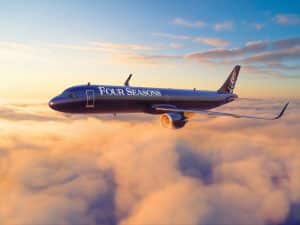The International Air Transport Association (IATA) announced global passenger traffic results for August showing a slight pick-up in

demand over the previous month. Total revenue passenger kilometers (RPKs) increased 5.9% compared to August 2013, which was above the 5.4% year-over-year increase recorded in July. August capacity climbed 5.5%. The load factor stood at 83.9% which is a 0.3 percentage point rise over August 2013.
“August was a good month right across the industry. All regions reported an expansion in demand for air travel. And load factors were high, reflecting the fact that August is peak travel season in the Northern hemisphere. We should, however, keep an eye on potential downside risks. European travel, for example, continues to show robust growth. The 6.1% year-to-date expansion in demand reflects a solid step up from the 3.8% growth recorded in 2013. But it remains a question how long the robust trend in passenger travel can continue in light of the continent’s increasingly worrying economic outlook,” said Tony Tyler, IATA’s Director General and CEO.
International Passenger Markets International passenger traffic rose 6.7% in August, with all regions showing growth over the previous year. Capacity also rose 6.7% and load factor was stable at 84.2%.
European carriers’ international traffic climbed 6.8% in August compared to the year-ago period. Carriers based in the region are experiencing strong demand despite the economic difficulties in the Eurozone. Sanctions related to the Russia-Ukraine crisis are among the factors having a dampening effect on key European economies including Germany. Capacity was up 6.0% pushing load factor to 86.9% which is 0.6 percentage points above previous-August levels.
Asia Pacific airlines saw their traffic rise 5.8% in August compared to the previous year. After a slow start, the Chinese economy has been stabilizing, supported by government fiscal stimulus, and regional trade activity which encourages business travel, has rebounded fully. Capacity rose 7.0% and load factor declined 0.9 percentage points to 81.0%.
North American airlines’ demand rose 3.2% in August compared to a year ago. According to JP Morgan/Markit, overall business conditions in the US are the strongest they have been since May 2010. With capacity up 5.0%, load factor fell 1.5 percentage points to 86.6%.
Middle East carriers had the strongest year-on-year traffic growth in August at 11.7% as airlines continue to benefit from the strength of regional economies and solid growth in business-related premium travel. Capacity rose 10.3% and load factor rose 1.0 percentage point to 83.0%.
Latin American airlines experienced an 8.2% rise in traffic, second highest among the regions. Capacity rose 6.4% and load factor rose 1.4 percentage points to 82.2%. While economies such as Colombia, Peru and Chile continue to expand robustly, growth in the Brazilian economy remains fundamentally weak and regional trade volumes have made no progress this year compared to the highs reached at the end of 2013.
African airlines’ demand rose 7.5%, while capacity climbed 5.9% and the load factor improved 1.1 percentage points to 75.0%. Because significant volatility in volumes for this region can occur, the strong traffic growth cannot be immediately interpreted as a trend change.
The Bottom Line The continuing Ebola crisis took on a new dimension with the first confirmed diagnosis of Ebola in the United States. IATA is closely coordinating with the World Health Organization (WHO). WHO evaluates the risk of Ebola transmission occurring on an aircraft as “very low.” WHO also continues to recommend against travel restrictions and border closures.
In close coordination with WHO, guidance materials have been developed for airlines to manage effectively public health crises. Specific guidance material has been developed for ground staff, crew and cleaners.
“The airline industry is taking its guidance from the WHO and public health authorities to keep flying safe for passengers and crew. Travelers should be reassured. WHO has clearly said that the risk of Ebola transmission on board an aircraft is very low. Moreover, WHO is not advising any restrictions on travel,” said Tyler.
Source : WAM News Agency for United Arab Emirates











